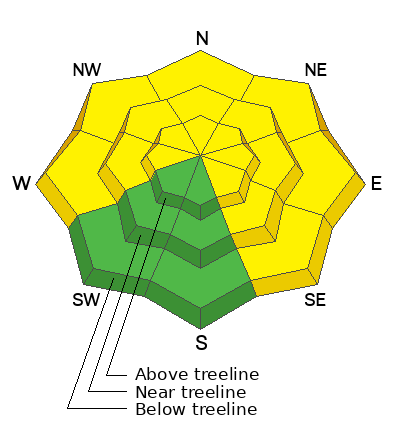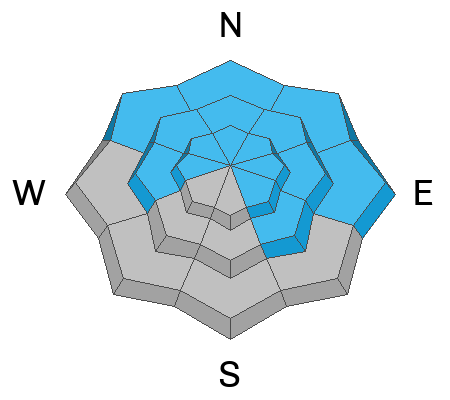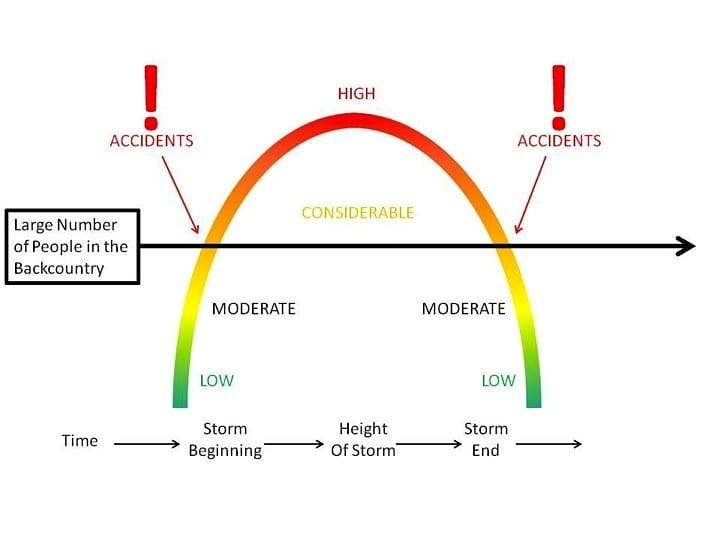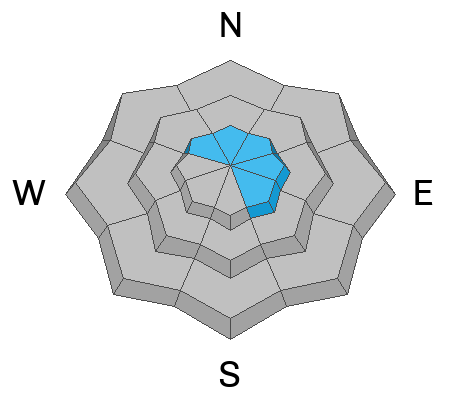Forecast for the Moab Area Mountains

Issued by Eric Trenbeath on
Friday morning, February 16, 2024
Friday morning, February 16, 2024
The avalanche danger is MODERATE. Deep, dangerous, and potentially deadly avalanches 3-6 feet deep, failing on a buried persistent weak layer remain possible on steep slopes that face W-N-E-SE with the greatest danger existing on slopes facing NW-N-E. And although the odds of triggering a slide have dropped, the consequences remain the same.
Winds from the south and west over the past few days have built shallow, stiff slabs of wind-drifted snow on leeward facing slopes above treeline. Look for signs of instability such as cracking in the snow surface and avoid areas that sound or feel hollow underneath.
A LOW danger exists on slopes facing S-SW.
Winds from the south and west over the past few days have built shallow, stiff slabs of wind-drifted snow on leeward facing slopes above treeline. Look for signs of instability such as cracking in the snow surface and avoid areas that sound or feel hollow underneath.
A LOW danger exists on slopes facing S-SW.

Low
Moderate
Considerable
High
Extreme
Learn how to read the forecast here









